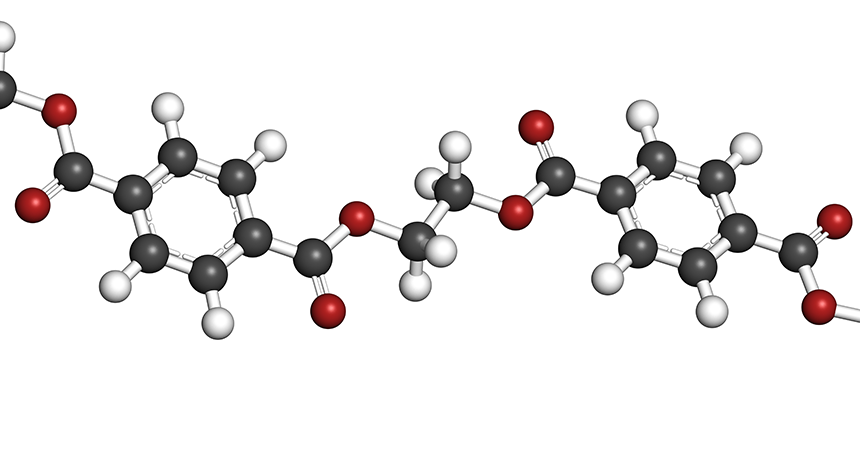Today we are talking about Polymers.
So what is a polymer? It’s a chemical compound, either naturally found or synthetically created, whose structure can usually be represented by a repeated small unit called a mer.
Huh?
Let’s try again: Poly is derived from the Greek word polu meaning many or much. A mer, derived from another Greek word, meros, and meaning part, is a repeating unit. So, polymer means many parts or many repeating units. A polymer’s chemical structure contains linked, repeating units that form a chain.
Natural polymer examples include cellulose, silk, wool, DNA, proteins, and latex from a rubber tree plant. Polyurethane, polyethylene, nylon, and vulcanized rubber are synthetic, or man-made, polymers.
Polymers are formed by a process called polymerization, a chemical reaction in which molecules of monomers join in repeating structural units. Consider those Greek origin words again – mono means single or alone, so monomers are single parts.
There are two types of polymerization: condensation (also known as step reaction) and addition (also called chain reaction). In condensation polymerization, the process of forming a polymer results in a small amount of a byproduct such as water or ammonia.
Addition polymerization involves a catalyst, a substance that speeds the rate of the chemical reaction. There is no byproduct. The catalyst can, however, affect the resulting polymer’s structural details and performance properties, usually resulting in a desired or good outcome and not a negative one.
Polymers can be classified into three different types based on how they behave molecularly. Once again, Huh? What that means is that there are three different types of polymers based on how, and how strongly, their molecules are joined. We won’t get into the specifics of molecular joining and strengths here, so to keep it simple …
Thermoplastics are a type of polymer that can be heated and melted, formed into a shape such as tubing, and cooled to hold that shape. They can later be melted again and reshaped. PVC, polyurethane and polypropylene are thermoplastics.
Thermosets are also heated, melted, formed, and cooled, but they cannot be reshaped – their finished form is irreversible. NewAge’s Silcon® silicone tubing is an example of a thermoset polymer.
Elastomers are, as the name says, elastic; that is, once formed, they can be stretched and will retract to their original dimensions. NewAge’s Newtex natural latex rubber tubing is an elastomer.
Some scholars classify a fourth type of polymer, fibers, that have a high tensile strength. NewAge uses polyester fibers (threads) as reinforcement material within its Nylobrade®, Urebrade®, and Silbrade® hose.
If you need some polymer tubing or have questions, phone us at 800-506-3924 or 215-526-2300, e-mail info@newageindustries.com, or use the Contact Us form below.


